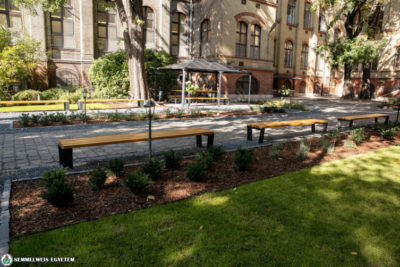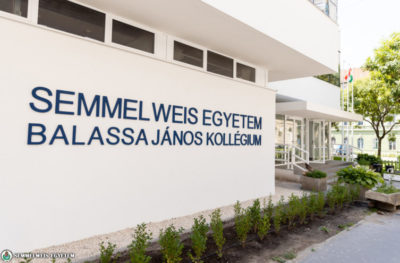It has been over a year now that our everyday life was disrupted by the onset of the coronavirus pandemic. Every aspect of professional and private life that did not necessarily require personal presence, was moved to online platforms. Although medical and health sciences education is highly dependent on the students’ physical presence, lectures and practical lessons also moved to virtual classrooms. In our article, also published in Times Higher Education, leaders of Semmelweis University talk about how the changes affected education, what measures were implemented to ensure a safe learning environment and high quality at the same time and how students have been supported in their studies. To get an insight into the students’ perspective, the representative of the students will speak about the challenges students of medicine and health sciences had to overcome as well as the active role they have played in infection control.
As one of the first cases of coronavirus infection was identified at Semmelweis University, students were abruptly pulled from classrooms, hospitals and clinics to reduce the risk of spreading the virus and to protect everyone involved in healthcare. This sudden change brought on social isolation, new routines in teaching and learning as well as different focal points and responsibilities for students and educators alike. Semmelweis University, as the largest health care provider and most prominent higher education institution of biomedical sciences in Hungary has played an active role in infection control since the onset of the epidemic in Hungary. The university adapted to the new circumstances promptly and took up a leading role in the fight against the virus by introducing strict safety measures, adjusting the curriculum to distance education and maximizing the efficiency of health care services. The most radical changes took place in the organization of healthcare services and the implementation of the curriculum. Dr. Péter Hermann, Vice-Rector for Educational Affairs and Dr. Alán Alpár, Vice-Rector for International Studies talk about what measures were implemented at the university to provide safe and seamless education, what benefits the pandemic-induced changes have brought, how students were helped and how they perceive students in these extraordinary circumstances.
The pandemic brought lockdowns, home office and distance education unexpectedly, which the university had to adapt to in order to provide uninterrupted education at the university. How was distance education integrated into a discipline that is strongly dependent on personal attendance and has a great emphasis on practical training?
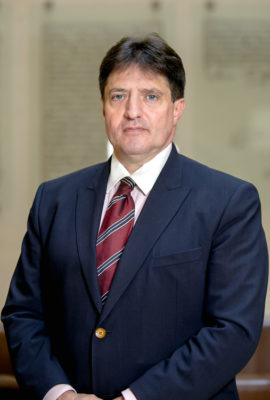 Dr. Péter Hermann: Semmelweis University has been in a special situation during the pandemic due to its focus on medical and health sciences education. It is important to know that personal presence in our educational programs are essential, as the acquisition of all the skills and knowledge of practice-based professions is impossible through the screen of a computer. We could not afford to lower the standards of education and ease academic requirements, therefore we immediately resumed practical training requiring the presence of the students as soon as the University reopened. A new system, which we called “reverse exam period”, was also introduced to provide students with the opportunity to make up for the practical courses they had missed.
Dr. Péter Hermann: Semmelweis University has been in a special situation during the pandemic due to its focus on medical and health sciences education. It is important to know that personal presence in our educational programs are essential, as the acquisition of all the skills and knowledge of practice-based professions is impossible through the screen of a computer. We could not afford to lower the standards of education and ease academic requirements, therefore we immediately resumed practical training requiring the presence of the students as soon as the University reopened. A new system, which we called “reverse exam period”, was also introduced to provide students with the opportunity to make up for the practical courses they had missed.
Dr. Alán Alpár: It was amazing to see how educators performed their lectures in an online form without any major problems, which also remained accessible for an extended time. Although this non-personal form of lecturing could not offer the same experience, students appreciated these efforts due to the high quality of the newly created lecture materials and their easy accessibility. Also, a huge amount of teaching material has been compiled, which aimed to demonstrate the skills normally acquired at practical courses. These proved to be very useful during practical lessons after the university was opened again. In clinical education, morning staff conferences and patient case presentations were also held online.
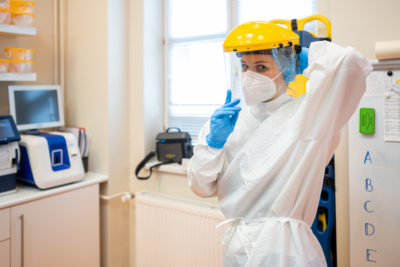 P.H.: Students, when trying to solve a medical problem years later as doctors, cannot blame their lack of practice on the special circumstances caused by the coronavirus. This is why we have paid particular attention to return to practical education with the students physically present as soon as the regulations made it possible during the second and third waves. We had to adapt to the new circumstances quickly during the first wave, when the Government ordered the institutions to start the spring break a week earlier in order to have time to prepare for online education. Honestly, I myself had serious doubts and was surprised to see how smooth and successful the transition was. It is the merit of my colleagues that they were able to provide a perfectly operating technical background and to produce new materials adapted to the new situation in a way that it seemed, online education at Semmelweis University has always been part of the curriculum and everyday practice.
P.H.: Students, when trying to solve a medical problem years later as doctors, cannot blame their lack of practice on the special circumstances caused by the coronavirus. This is why we have paid particular attention to return to practical education with the students physically present as soon as the regulations made it possible during the second and third waves. We had to adapt to the new circumstances quickly during the first wave, when the Government ordered the institutions to start the spring break a week earlier in order to have time to prepare for online education. Honestly, I myself had serious doubts and was surprised to see how smooth and successful the transition was. It is the merit of my colleagues that they were able to provide a perfectly operating technical background and to produce new materials adapted to the new situation in a way that it seemed, online education at Semmelweis University has always been part of the curriculum and everyday practice.
Online education in medicine and health sciences is a huge challenge to overcome but it also has new features to be harnessed in the future. How has Semmelweis University taken advantage of the opportunities this new form of education offered?
P.H.: We learned early on that online education has several advantages if we looked beyond the difficulties. Students are much more comfortable with this platform and prefer this form of communication to the traditional way. In our experience they were more responsive on the message board, they were more active during lectures answering questions and opened up more easily. We also realized that the opportunities offered by online tools would be ideal for our post-graduate and weekend courses, saving students the time and energy spent on travelling. We had been planning the introduction of online education in this form and thanks to the coronavirus it was decided in a matter of moments how easily it could be done. We would like to keep this format even in “peacetime” sparing the trouble of travel for residents, who attend these courses.
Students have been at the center of the measures targeting education, which triggered a lot more changes in other aspects of life. How have students been supported and guided through these challenging times?
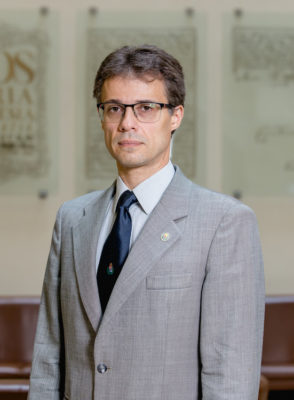 A.A.: Students were kept updated through various channels and all these actions were synchronized by our Center for Education of International Studies (CEIS). To help international students manage their studies and rotations, they have received individual attention and continuous support. This was a huge challenge as staff at the English and German language secretaries of CEIS individually helped students not only with their studies but also with travel issues and even personal problems if required. The international students’ associations also gave a hand in keeping constantly in touch with our students. To provide students with reliable and the most up-to-date information regarding their studies, the rector also held two online forums for international students.
A.A.: Students were kept updated through various channels and all these actions were synchronized by our Center for Education of International Studies (CEIS). To help international students manage their studies and rotations, they have received individual attention and continuous support. This was a huge challenge as staff at the English and German language secretaries of CEIS individually helped students not only with their studies but also with travel issues and even personal problems if required. The international students’ associations also gave a hand in keeping constantly in touch with our students. To provide students with reliable and the most up-to-date information regarding their studies, the rector also held two online forums for international students.
The coronavirus required the contribution of all health workers including those at the beginning of their career: students. How do you see the students’ presence and activities in the clinical realm?
P.H.: I can only speak of our students with the greatest appreciation. They have grown up very quickly to understand and feel how serious the situation was. Hundreds of students volunteered immediately either to help the National Ambulance Service with PCR screenings or work together with nurses in inpatient clinics. All this was not originally part of the curriculum, but I am sure that these experiences have made them stronger, better people and have become more committed to the vocation they had chosen.
A.A.: International students volunteered to take part in disease control from the very first moment. Language barrier forced them to be active within the walls of our university. However, it soon turned out that their help is invaluable since Hungarian students were stationed at non-university hospitals all over Hungary. They efficiently took over the role of their Hungarian peers in PCR testing, but also in nursing and other hospital activities. To acknowledge their efforts, their work has been accepted as part of their summer or clinical practice. A most heart-warming experience was that international students volunteered prior to any reward announcement – as real Semmelweis citizens.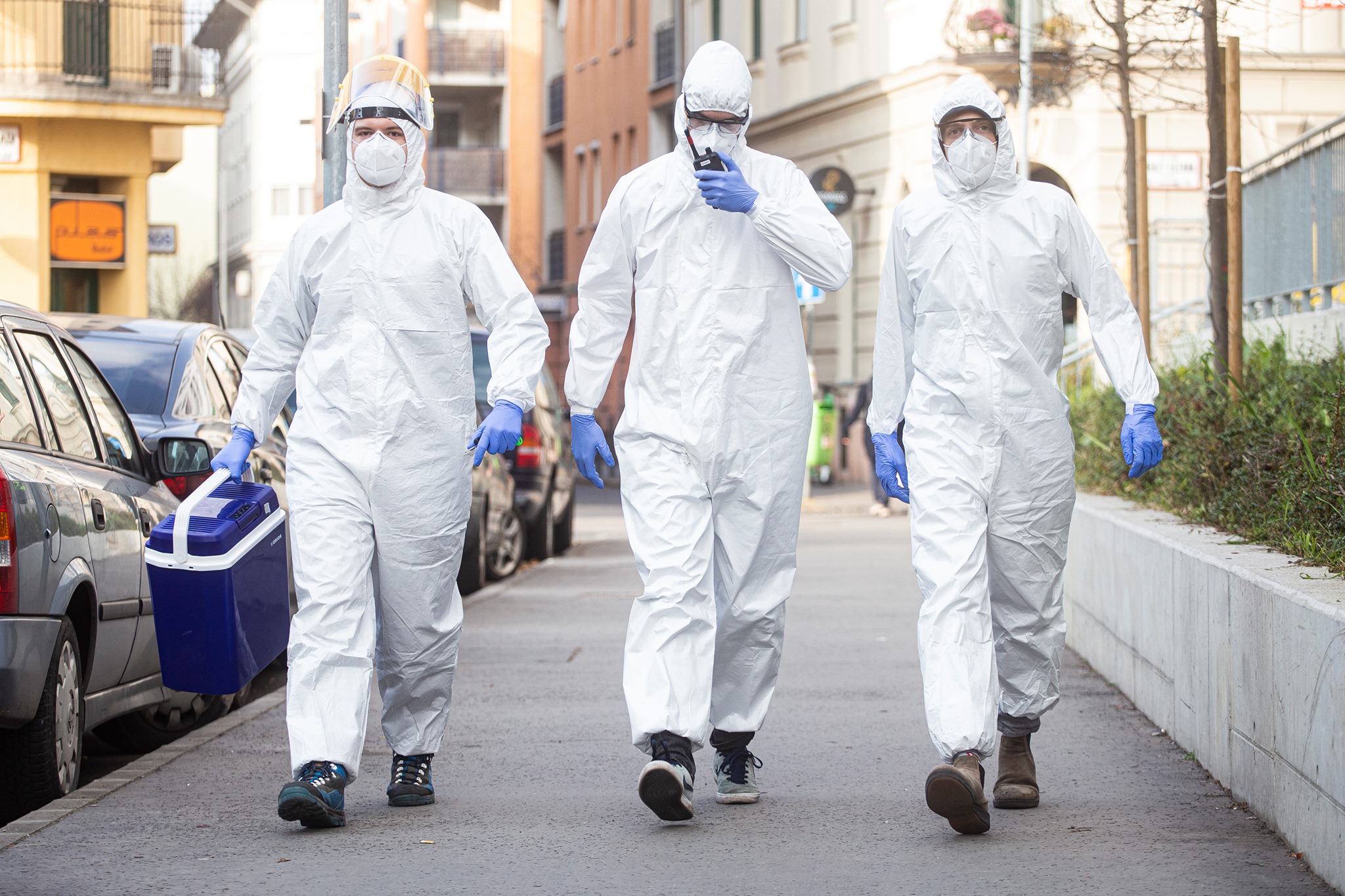
Although all students were severely affected by the collateral effects of the coronavirus on their studies and their social life, they adapted to the circumstances with great flexibility and embraced the new challenges. Bálint Tripolszky, 6th Year student of Medicine and President of Semmelweis University’s Students’ Union gives and insider’s view on the students’ perspective of the pandemic.
Students have actively taken part in disease control in several fields in addition to continuing their studies. How have the Students’ Union and the university supported students in coping with the difficulties of distance education and the feeling of isolation?
 Right from the beginning, the Students’ Union have sought to help the University in the fight against the coronavirus. Together with various departments we assisted the realization of a well-coordinated infection control including the operation of pre-triage systems at entry points, doing PCR sampling and related administrative work, helping out at inpatient wards and being involved in H-UNCOVER, the nationwide representative screening program. In collaboration with the leaders of the university we also created an extraordinary university regulation to allow students to carry on with their studies while taking part in voluntary work, which would be counted as part of a practical course worth credit points. To make the integration of volunteer work into the curriculum easier and help students create a balance between their studies and volunteering activities, a new scholarship system was developed, as well as an application and registration platform.
Right from the beginning, the Students’ Union have sought to help the University in the fight against the coronavirus. Together with various departments we assisted the realization of a well-coordinated infection control including the operation of pre-triage systems at entry points, doing PCR sampling and related administrative work, helping out at inpatient wards and being involved in H-UNCOVER, the nationwide representative screening program. In collaboration with the leaders of the university we also created an extraordinary university regulation to allow students to carry on with their studies while taking part in voluntary work, which would be counted as part of a practical course worth credit points. To make the integration of volunteer work into the curriculum easier and help students create a balance between their studies and volunteering activities, a new scholarship system was developed, as well as an application and registration platform.
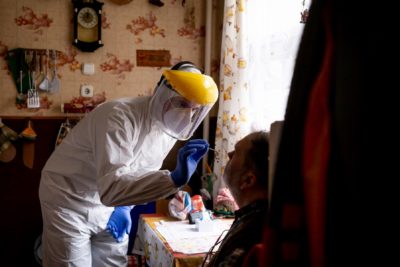 When online education was introduced, a great number of students used the university’s support package of digital tools, which enabled them to participate in online education. We have also been trying to maintain the quality of student life similar to that of before the pandemic and keep the community together. One of the most concerning issues was uncertainty, therefore we immediately shared the quickly changing information related to education and other university matters with the student community. We have organized online programs, like QuizNight, ZOOM sport classes, Live DJ-sets to provide students with opportunities to interact and socialize. To make studying easier for those who like the supportive atmosphere of the library, online study rooms have been set up. Amidst challenging times like the pandemic, it is crucial to have platforms that enable students to connect with their peers ensuring a supportive environment thus decreasing the feeling of isolation. Quarantine and isolation impose significant physical and mental burden on all of us, therefore we have also made sure that students have access to the university counselor, who provides professional mental health support to those in need.
When online education was introduced, a great number of students used the university’s support package of digital tools, which enabled them to participate in online education. We have also been trying to maintain the quality of student life similar to that of before the pandemic and keep the community together. One of the most concerning issues was uncertainty, therefore we immediately shared the quickly changing information related to education and other university matters with the student community. We have organized online programs, like QuizNight, ZOOM sport classes, Live DJ-sets to provide students with opportunities to interact and socialize. To make studying easier for those who like the supportive atmosphere of the library, online study rooms have been set up. Amidst challenging times like the pandemic, it is crucial to have platforms that enable students to connect with their peers ensuring a supportive environment thus decreasing the feeling of isolation. Quarantine and isolation impose significant physical and mental burden on all of us, therefore we have also made sure that students have access to the university counselor, who provides professional mental health support to those in need.
Students started the academic year 2020/2021 with high hopes, however knowing that offline education might be suspended again. Since the end of October, when the university closed again, students have been officially involved in PCR testing and the vaccination program, as well as assisting the National Ambulance Service. How do you feel about being at the frontline of the fight against the coronavirus, taking on a huge responsibility, while trying to create a balance between studying, work and free time?
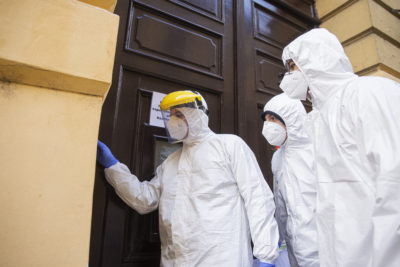 Being in the frontline is challenging for all of us, but we have overcome our fears by our curiosity, sense of duty, dedication to the medical profession as well as our willingness to help. No matter how hard it is, these are all aspects that we had considered when choosing medicine for our career. We are proud to be fighting against the pandemic sacrificing our free time and putting the interests of a healthy society above our own personal needs and assisting the National Ambulance Service. We have received a lot of help from the National Ambulance Service in getting our schedules organized, not to mention their appreciation and immense gratitude towards us.
Being in the frontline is challenging for all of us, but we have overcome our fears by our curiosity, sense of duty, dedication to the medical profession as well as our willingness to help. No matter how hard it is, these are all aspects that we had considered when choosing medicine for our career. We are proud to be fighting against the pandemic sacrificing our free time and putting the interests of a healthy society above our own personal needs and assisting the National Ambulance Service. We have received a lot of help from the National Ambulance Service in getting our schedules organized, not to mention their appreciation and immense gratitude towards us.
Although the mental and physical load is higher than usual and you have been exposed to situations never encountered before. Do you think students have benefited from taking active part in infection control, and if so, how?
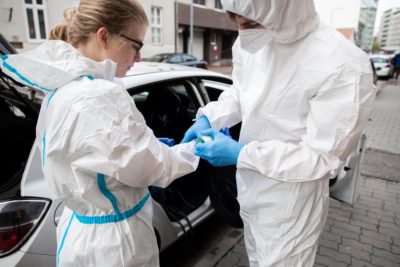 In order to be successful in the field of healthcare of our choice, it is necessary to acquire a special mindset taking the needs of the patients into consideration and handling them as priorities. This way of thinking can only be mastered through years of practice spent in patient care. This is the only way to become thoughtful and well-rounded health professionals. We have taken a lot of steps towards becoming knowledgeable health professionals of the future by taking active part in epidemic control. In addition to being able to put theoretical knowledge acquired during our studies into practice, we have learnt special skills. We have learnt how to work in a team helping one another, how to handle workload and stressful conditions in real life settings and how to best organize our tasks at hand. Furthermore, we have had the opportunity to improve our interpersonal skills both with patients and colleagues, learn effective patient-centered communication strategies. All these experiences have provided us with a head start in our early career as health professionals.
In order to be successful in the field of healthcare of our choice, it is necessary to acquire a special mindset taking the needs of the patients into consideration and handling them as priorities. This way of thinking can only be mastered through years of practice spent in patient care. This is the only way to become thoughtful and well-rounded health professionals. We have taken a lot of steps towards becoming knowledgeable health professionals of the future by taking active part in epidemic control. In addition to being able to put theoretical knowledge acquired during our studies into practice, we have learnt special skills. We have learnt how to work in a team helping one another, how to handle workload and stressful conditions in real life settings and how to best organize our tasks at hand. Furthermore, we have had the opportunity to improve our interpersonal skills both with patients and colleagues, learn effective patient-centered communication strategies. All these experiences have provided us with a head start in our early career as health professionals.
The Students’ Union also made a film about their experiences of studying, taking up on health care duties and being students during the coronavirus.
Ágnes Raubinek
Photo: Attila Kovács – Semmelweis University, Semmelweis University’s Students’ Union
